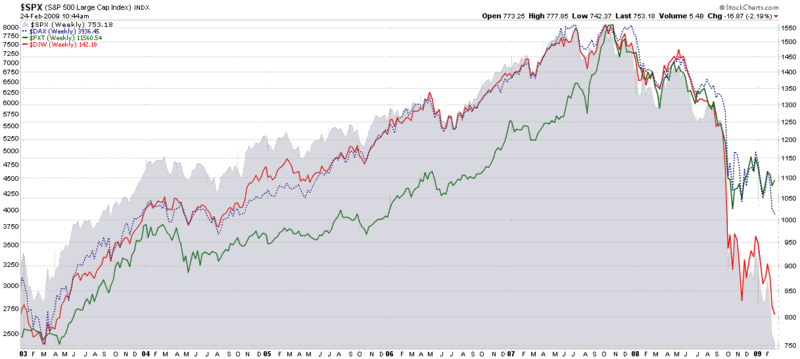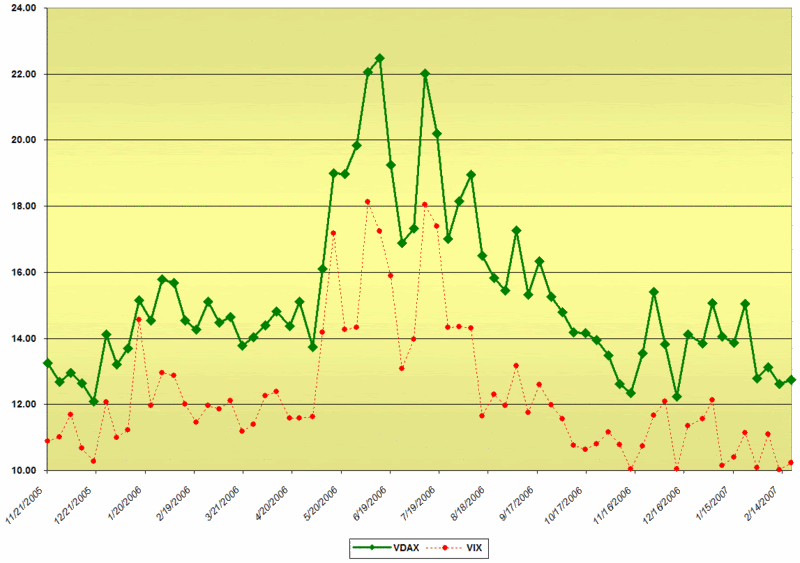Germany and China Faring Relatively Well in Downturn
With the SPX perched precariously above its November low and pundits monitoring the vital signs around the clock, coverage of the stock markets in the U.S. has once again taken on a very Americentric tone. For the most part, focusing on the U.S. financial system and the U.S. economy makes sense. One of the many lessons to come out of the current financial crisis, however, is the end of the decoupling myth. In fact, we are all butterflies flapping our wings on a global stage now.
As always, some countries are faring better than others. The chart of the Nikkei 225 looks sufficiently like that of the SPX that I elected to omit it from the graphic below. Instead, I have chosen to compare the stock market indices of the world’s third and fourth largest economies, China (FXT, the index that forms the basis of the popular ETF, FXI) and Germany (DAX), in the context of the S&P 500 and the Dow Jones World Stock Index (DJW).
Note that relative to the October/November lows, China has shown a distinct pattern of making higher lows – in sharp contrast to U.S. and global indices. Germany has also shown considerable resiliency. Even though the DAX is now trading below its November low, Germany stocks have outperformed their global counterparts.
Scrolling back to 2003, I find it interesting that both China and Germany still are well above their 2003 lows, while the Dow Jones World Stock Index is now only about 5% above the lows from that bear market.
So while most investors are currently focusing their attention on the Dow Jones Industrial Average, the S&P 500, the NASDAQ indices and the Russell 2000, support levels and trends in key international indices may hold equally important clues about global buying and selling patterns – and the possibility of finding a bottom.

[source: StockCharts]



